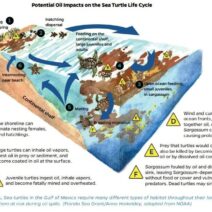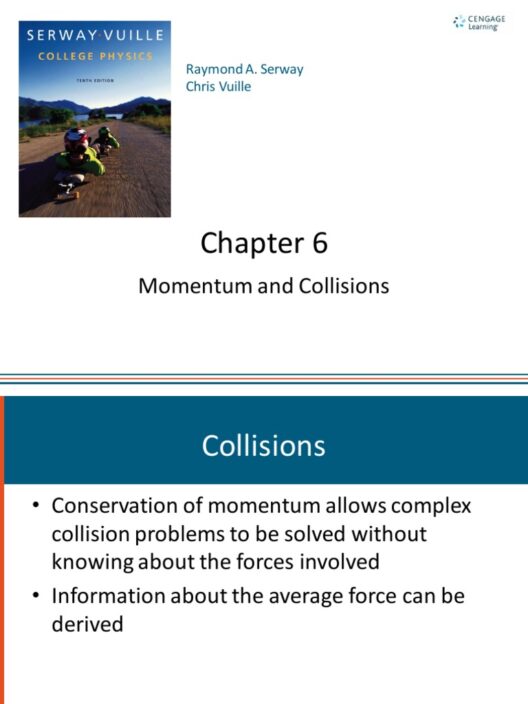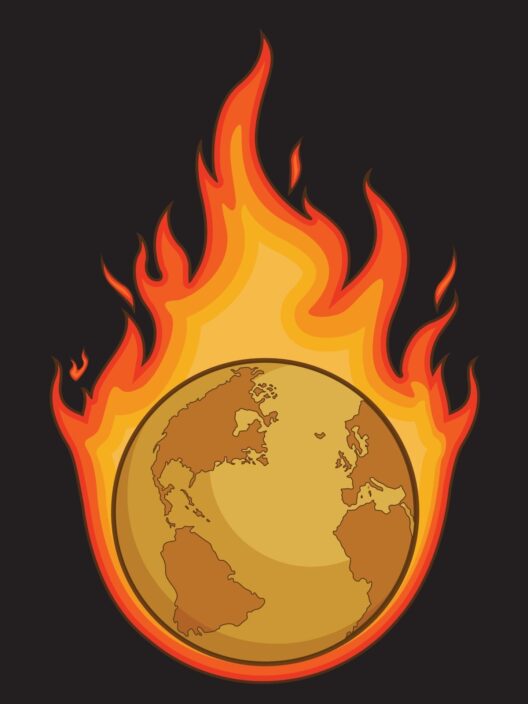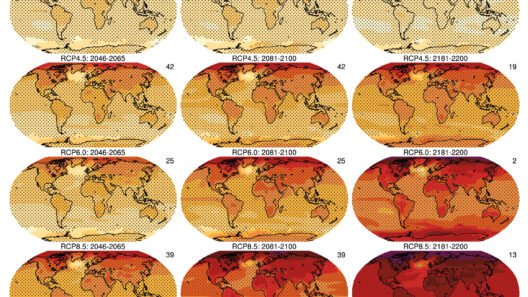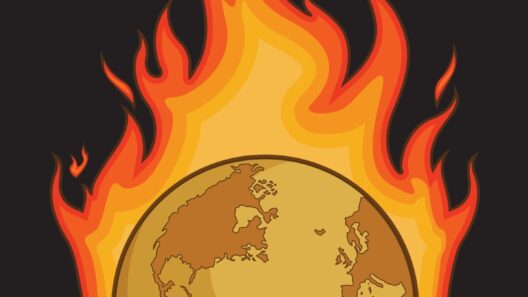The intricacies of atmospheric dynamics often provoke curiosity, particularly regarding the relationship between the ozone layer and global warming. The ozone layer is a stratospheric region rich in ozone (O₃) that serves as an essential shield, absorbing a significant portion of the sun’s harmful ultraviolet (UV) radiation. While its protective effects against UV radiation are unequivocal, the question arises: Does this layer mitigate or exacerbate global warming?
To comprehend this relationship, one must delineate the fundamental mechanics involved. The ozone layer has garnered attention not solely for its protective capabilities but also for its role in climate regulation. Ozone’s dual nature can be perplexing; at higher altitudes, it exists as a safeguard against UV radiation, while at ground level, it emerges as a pollutant, contributing to the tropospheric ozone that exacerbates the greenhouse effect.
The ozone layer, located between 10 to 30 miles above the Earth’s surface, plays an instrumental role in mitigating global temperature rises by preventing excessive solar radiation from penetrating the lower atmosphere. However, the interactions between the ozone layer and greenhouse gases, notably carbon dioxide (CO₂) and methane (CH₄), complicate this narrative. The presence of these greenhouse gases can induce warming even as the ozone layer functions effectively in its protective capacity.
At first glance, it may appear that the ozone layer solely acts to curtail the impacts of climate change. Indeed, evidence indicates that a healthy ozone layer contributes to the stabilization of global temperatures. It achieves this by preventing excessive heat accumulation that could exacerbate existing climate fluctuations. However, this scenario is not as straightforward as it may seem. The complexities of atmospheric chemistry introduce nuances to this interaction, particularly due to the presence of anthropogenic pollutants and climate-altering substances.
The detrimental effects of ozone-depleting substances—such as chlorofluorocarbons (CFCs)—reveal an alarming layer to this dialogue. While these chemicals were primarily engineered for industrial and domestic applications, their release into the atmosphere has precipitated significant degradation of the ozone layer. This degradation can lead to an uptick in UV radiation reaching the Earth’s surface, subsequently affecting surface temperatures and potentially worsening global warming.
A counterpoint to note is the phenomenon of ozone as a greenhouse gas itself. Stratospheric ozone absorbs UV radiation and releases heat, contributing momentarily to temperature inversions that ultimately impact regional climates. These warming effects can influence the tropospheric climate system. Hence, the debate hinges on the balance between the protective capability of the ozone layer against UV radiation, and the role that ozone plays in radiative forcing—a measure of how the energy balance of the Earth’s atmosphere is altered by factors like greenhouse gas concentrations.
The temporal aspect of ozone-layer dynamics compounds this inquiry. The phenomena of ozone depletion and climate change are not static but rather evolve over time. The Montreal Protocol, enacted in 1987, targeted the reduction of ozone-depleting substances, significantly benefiting the ozone layer. As a consequence, it has contributed to a gradual recovery that, according to projections, could return the ozone layer to its pre-1980 levels by the middle of this century. This recovery is poised to yield beneficial results not only in terms of UV protection but also for climate stabilization.
The question of whether the ozone layer prevents or worsens global warming can thus be envisioned through a prism of complexities. Ultimately, the overarching narrative is one of interconnectedness. As humanity navigates its way through climate challenges, the protection of the ozone layer is paramount. A robust ozone layer correlates with a more stable climate, while its deterioration poses significant risks, accentuating the need for concerted global efforts.
The education of the public regarding these dynamics is crucial. As scientific knowledge and media coverage evolves, awareness fosters a greater understanding of how individual actions can contribute to the preservation of the ozone layer. Public advocacy for policies that mitigate greenhouse gas emissions and support sustainable practices can contribute to a micro-positive feedback loop, thus enhancing the resilience of the ozone layer and, by extension, the global climate.
Integrating strategies that target ozone protection into broader climate change initiatives represents a holistic approach to environmental stewardship. Policymaking rooted in empirical data can facilitate a triumvirate of benefits: improved public health through reduced UV exposure, enhanced agricultural productivity via climate stability, and a sustained and recovering ozone layer. Such strategies not only hold potential for future generations but also instill community engagement bolstered by a reformative sense of purpose against climate crises.
Moreover, it is essential to continue advancing research into the behavior of ozone in conjunction with other atmospheric phenomena. This exploratory focus can yield insights pivotal for refining climate models and for developing innovative mitigation strategies. Through research, society can deepen its comprehension of the synergies between atmospheric chemistry and climate systems, ultimately enabling a fortified response to the ongoing challenge of global warming.
In summation, the relationship between the ozone layer and global warming encapsulates multifaceted dynamics. While the ozone layer undoubtedly serves as a protective buffer against harmful UV radiation, its interaction with greenhouse gases and anthropogenic pollutants necessitates a nuanced understanding. Responsible stewardship of the ozone layer emerges as a key element in the broader endeavor to combat climate change. The findings gleaned from ongoing research will undoubtedly shape the conversations and actions necessary for fostering a sustainable future.


